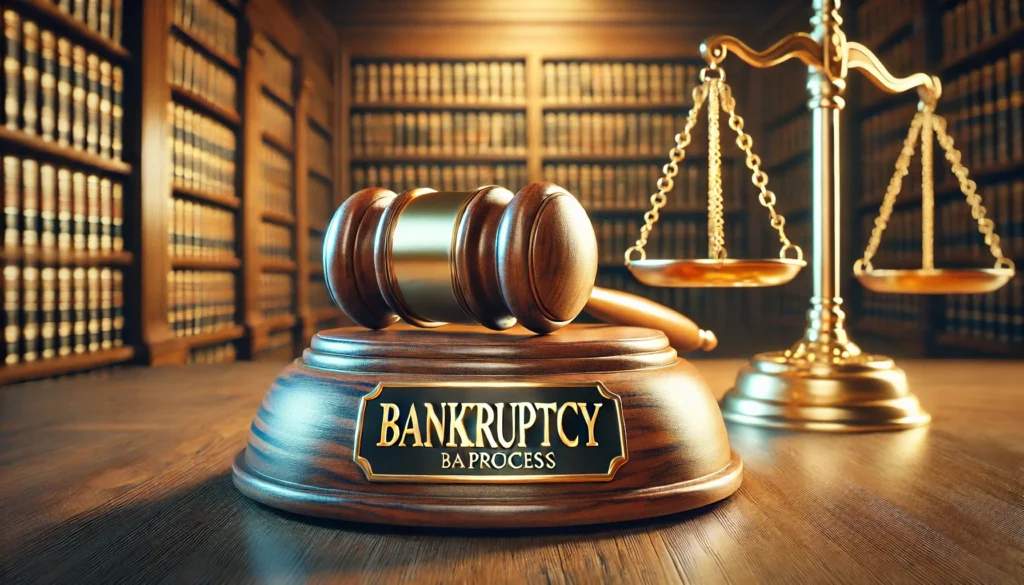Managing overwhelming debt can be daunting and emotionally draining. The bankruptcy process provides a legal avenue for individuals and businesses to regain control of their finances, offering relief and a fresh start. In this article, we will explore the concept of bankruptcy, the steps involved in the bankruptcy process, and its potential benefits and drawbacks.
What is Bankruptcy?
Bankruptcy is a legal proceeding initiated when individuals or entities cannot repay their outstanding debts. The court evaluates the financial situation and determines the best course of action, which may involve restructuring debts or liquidating assets. Understanding the bankruptcy process helps debtors and creditors alike navigate this challenging situation effectively.
Types of Bankruptcy
In the U.S., the most common forms of bankruptcy are Chapter 7, Chapter 11, and Chapter 13:
- In Chapter 7 bankruptcy: Non-exempt assets are liquidated to satisfy creditors.
- Chapter 11 Bankruptcy: Typically used by businesses to restructure and continue operations while paying debts.
- Chapter 13 Bankruptcy: Allows individuals to create a repayment plan over 3–5 years.
Each type has unique steps and criteria within the bankruptcy process, making it vital to choose the right option based on individual circumstances.
Eligibility for Filing Bankruptcy
Not everyone qualifies for every type of bankruptcy. Eligibility depends on income, debt levels, and other factors. For example, Chapter 7 requires passing a means test, while Chapter 13 mandates having a regular income. Determining eligibility is a crucial first step in the bankruptcy process, as it lays the foundation for subsequent actions.
Signs You May Need to Consider Bankruptcy
Some warning signs indicating the need for bankruptcy include:
- Inability to pay bills on time.
- Accumulation of significant credit card debt.
- Facing foreclosure or repossession.
The bankruptcy process is designed to protect individuals facing such financial hardships, providing them with relief and an opportunity to rebuild.
How the Bankruptcy Process Begins
The bankruptcy process starts by filing a petition with the court. Your assets, obligations, income, and spending are all fully disclosed in this petition. Once filed, an automatic stay goes into effect, halting creditor collection efforts, including phone calls, wage garnishments, and lawsuits.
The Role of a Bankruptcy Trustee
Once a bankruptcy case is filed, a trustee is appointed to oversee the proceedings. The trustee’s responsibilities include reviewing your financial information, liquidating assets (if applicable), and ensuring creditors receive payment as per the bankruptcy plan. The trustee plays a pivotal role in ensuring the bankruptcy process is fair and transparent.
Credit Counseling and Financial Education
Before filing for bankruptcy, individuals must complete a credit counseling session from an approved agency. Additionally, a debtor education course is required before the debts are discharged. These sessions aim to educate individuals about managing finances and avoiding future debt, making them essential components of the bankruptcy process.
Impact of Bankruptcy on Credit
Filing for bankruptcy has a significant impact on your credit score, often lowering it by several points. The record of bankruptcy stays on your credit report for up to 10 years. However, the bankruptcy process also provides an opportunity to rebuild credit over time, starting with responsible financial habits.
Benefits and Drawbacks of Bankruptcy
Benefits:
- Relief from overwhelming debt.
- Protection from creditor harassment.
- A chance to rebuild financial stability.
Drawbacks:
- Negative impact on credit.
- Potential loss of assets.
- Limited access to credit initially.
Understanding these pros and cons is essential to navigating the bankruptcy process effectively.
Life After Bankruptcy
Emerging from bankruptcy offers a clean slate but requires discipline to maintain financial health. Start by creating a budget, building an emergency fund, and gradually improving your credit score. The bankruptcy process may be challenging, but it paves the way for long-term financial freedom when approached wisely.
Conclusion
The bankruptcy process serves as a lifeline for those drowning in debt, offering relief and a path to financial recovery. By understanding its steps, requirements, and consequences, individuals and businesses can make informed decisions. While the journey may be challenging, bankruptcy can be a powerful tool for regaining financial freedom and peace of mind.
Article Recommendations
Bankruptcy Decoded: A Comprehensive Guide to Financial Rebirth
The Hidden Truths About Bankruptcy: Myths, Realities, and Survival Tips
Bankruptcy Laws Demystified: What You Need to Know Before Filing
Life After Bankruptcy: Strategies for a Fresh Financial Start

